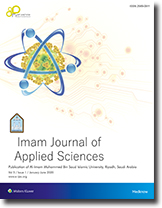Perception and Acceptance of Assisted Reproductive Technologies (ART) Among Infertile Couples in Saudi Arabia: A Cross-Sectional Questionnaire-Based Study
Perception and Acceptance of Assisted Reproductive Technologies (ART) in Saudi Arabia
Keywords:
Assisted Reproductive Technologies, ART, infertility, Saudi Arabia, IVF, awareness, acceptance, cost barriers, social stigmaAbstract
Background: Infertility is a significant health concern affecting 10–15% of couples in Saudi Arabia, with Assisted Reproductive Technologies (ART) offering potential solutions. However, cultural, religious, and socioeconomic factors heavily influence the perception and acceptance of these treatments. This study examines the perception and acceptance of ART among infertile couples in Saudi Arabia.
Methods: A cross-sectional questionnaire-based study was conducted from January to December 2024, involving 428 infertile couples (aged 20–49) attending fertility clinics in Mecca. Data were collected on demographics, ART awareness, perceptions (including cost and stigma), and predictors of acceptance. Statistical analysis was performed using SPSS v.26, with significance set at p < 0.05.
Results: The study revealed high awareness of ART (87.9%), with healthcare providers (46.3%) and the internet (33.4%) as primary information sources. However, only 67.5% correctly defined IVF. Acceptance of ART was higher among women (71.8% vs. 61.7% in men, p = 0.023), those with higher income (OR = 1.95 for >20,000 SAR) and education (OR = 2.31), and couples with longer infertility duration (>5 years, OR = 3.14, p < 0.001). Major barriers included cost (82.7%) and social stigma (55.6%).
Conclusion: While awareness of ART is high, financial constraints and societal stigma remain significant obstacles. Policymakers and healthcare providers should address these barriers through subsidized treatment programs and public education campaigns to improve ART accessibility in alignment with cultural and religious values.




